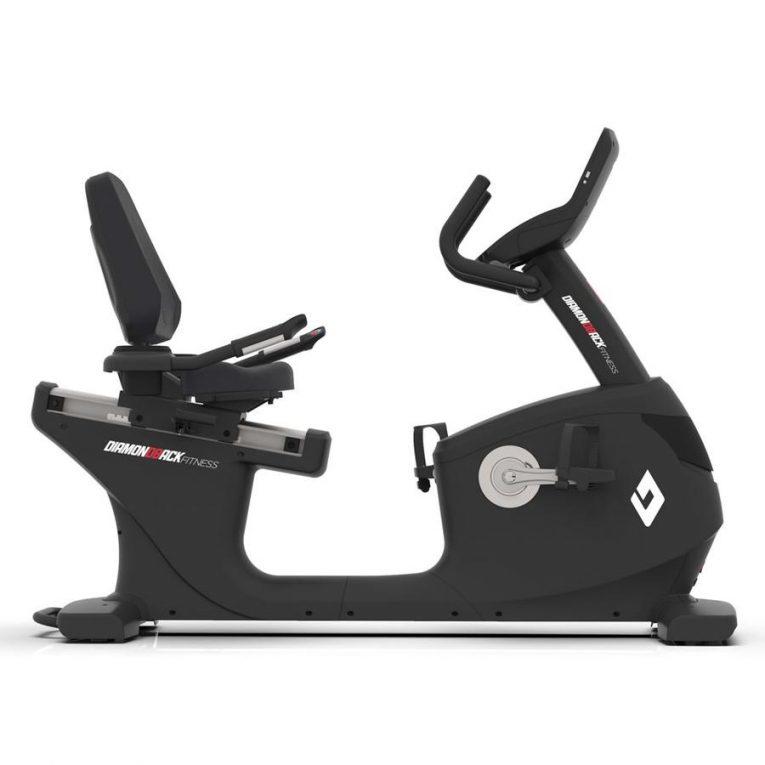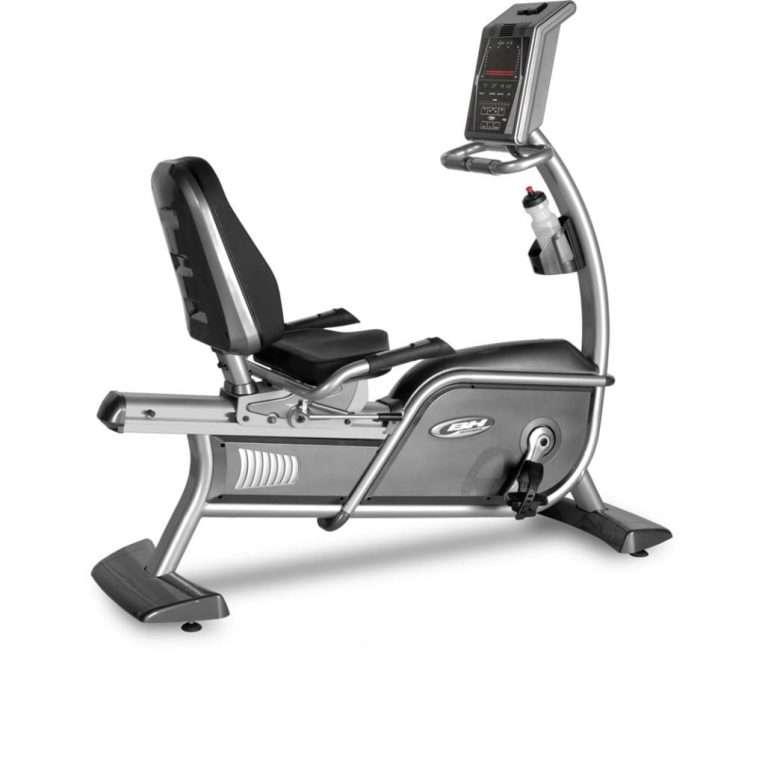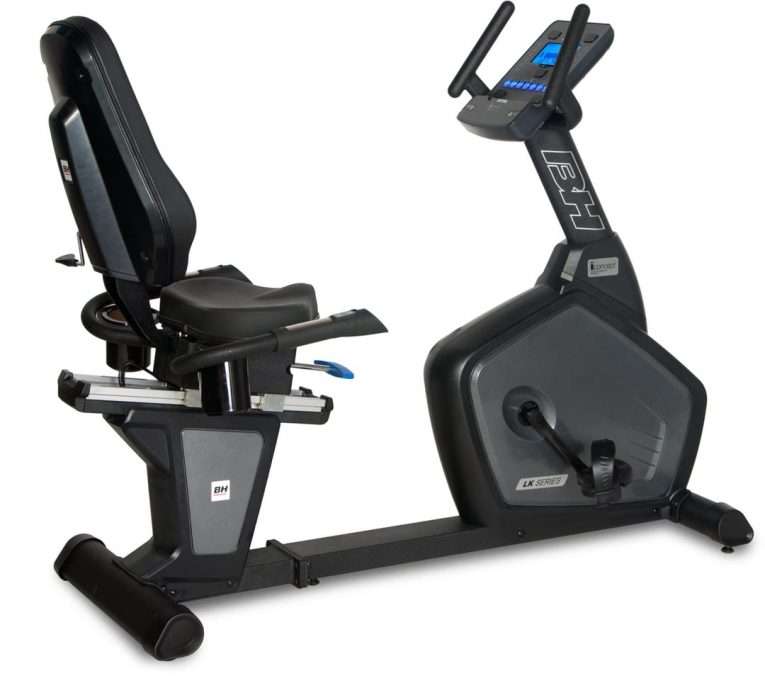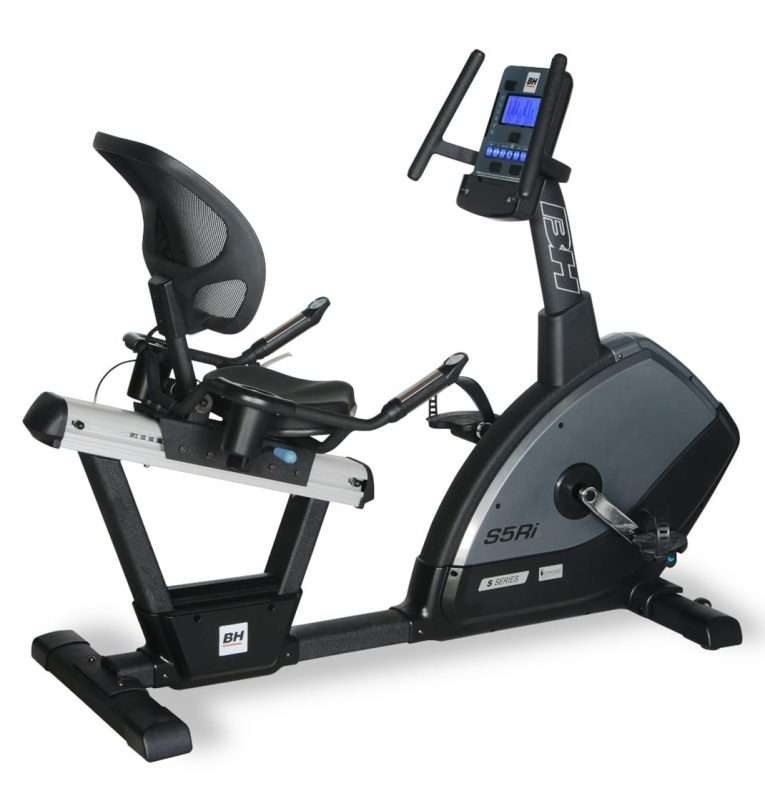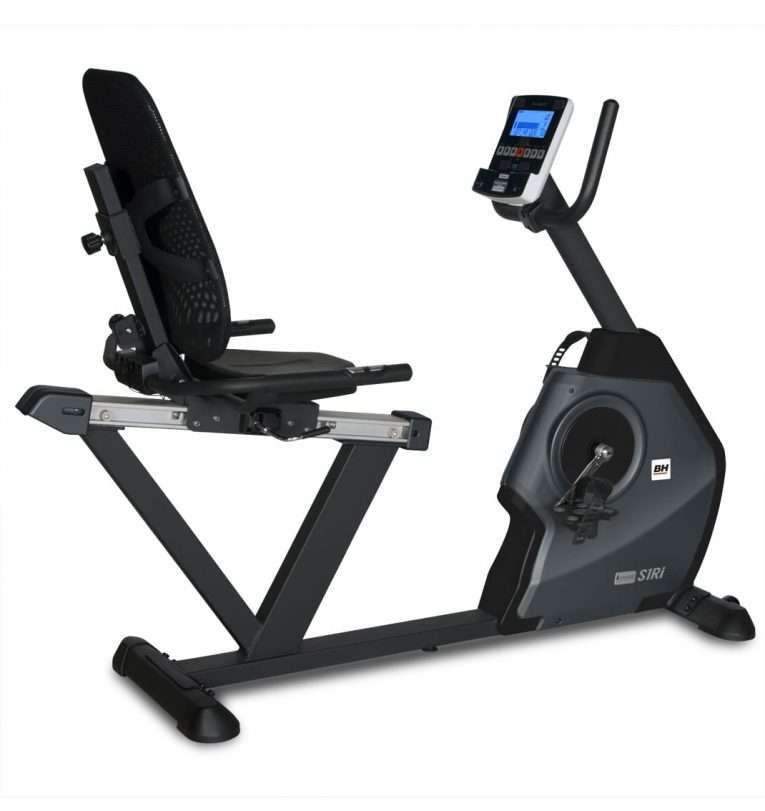For those who like to exercise in comfort, stationary recumbent bikes may be the best choice around. But don’t mistake comfort for lack of intensity. I’ve been lifting weights long enough to have some knee pains related to squats and deadlifts, and there’s a lot of value to adding bikes into the mix. The same can be true for long-time runners. The great thing about recumbent bikes is they take stress off your lower joints without sacrificing intensity. Unlike upright stationary models that can be rough on your tail due to the hard, narrow seats, the best recumbent bikes have chair-like seats with comfortable cushioning and great lumbar support. I like how these can relieve pressure from your spine as you lean back to cycle, plus this type of seated biking is less jarring to joints in your ankles, knees and hips. This is partly because you exert less downward pressure than when seated upright.
Some people might think this lowers the exercise intensity and they couldn’t be more in error. When I get onto a recumbent bike, I can crank the resistance up as high as I want and really isolate the quadriceps, calves, and to some extent, the hamstrings. If you’re wanting to get the anaerobic value of biking along with the aerobic, then recumbent bikes can be a great choice. Remember, anaerobic exercise refers to workouts which break down the body’s glucose without using oxygen, whereas aerobic exercise does use oxygen. So, we’re thinking more about resistance training here, and conditioning the muscles to handle greater loads. If you visit the rehab unit of a hospital, you’ll probably see a recumbent bike, and that’s not because they’re easier.
For all these reasons, recumbent bikes can also work great for folks battling the bulge, or that overhang of belly that can preclude them from sitting properly on a spin bike. In my experience, there’s a reason recumbent bikes are so popular. Read below to see why.
Why You Should Trust Our Review Of Recumbent Exercise Bikes
At ExerciseBike.net, we bring you comprehensive reviews of exercise bikes so you can decide which one is right for you. Our staff thoroughly test all the exercise bikes we review. We install them, ride them, and try out all of the features. We get to know each and every exercise bike we review extremely well. Our reviewers log miles riding. We listen and record the sound of the motor, try out all aspects of the console and try the bike’s features.
Every exercise bike we review undergoes the same rigorous process. That way we can compare and contrast them and give you an honest review of what we think.
Our reviewers are exercise bike and fitness experts. Brian, the author of this review, is a competitive bodybuilder, and is a 7-time national qualifier in both men’s bodybuilding and classic physique within the NPC competitions. He has coached and been coached on cardiovascular training, HIIT, and nutrition, particularly as it pertains to weight loss for competitions. He is an expert at exercise bikes, has been on this bike, and you can trust his opinion on all of the bikes he reviews.
One of My Favorites: ProForm Pro C10R
One of my favorite recumbent bikes online right now happens to be the ProForm Pro C10R which you’ll see our fitness expert Jessica using above and below here while we were visiting the iFit headquarters and showroom in Logan, Utah. Available online at Amazon.com for just $712, this unit fit me like a glove while on it. Measuring 55″ x 25.25″ x 17.25″ this bike can sport up to 300 pounds in user weight and comes iFit-enabled. Like everything else fitness-related these days, the recumbent bikes are also featuring more and more streaming workouts. Bikes made by iFit, which also produces NordicTrack machines, afford you automatic trainer control, which means either the program or a live trainer can take and adjust the resistance while you exercise. That’s one function I’ve really come to like about their machines. I never fail to hit my goals when I let the program adjust the resistance as there’s simply no excuse for going slower. The only downside I’ve seen with iFit-produced machines is no, you can’t use the screens with programs other than iFit. This does lock you into their program which runs about $39 per month for a family plan, which is something to keep in mind when shopping.
Should I get a Recumbent Bike for home?
Recumbent bikes are ideal for people with limited mobility or back pain, such as senior citizens, but these cardio trainers are also popular with riders in top form. I love the way the design just blends into a home, whether in a garage gym or living room. The way the seats are designed just makes them look like they belong there. Because you’re seated, you can crank up the resistance and really focus on the quads and hamstrings while watching television. When I’m using a spin bike on the other hand, I’ll end up standing atop the pedals. This not only brings my own bodyweight into the movement and lessens the quad burn, but the activity is more in line with a scheduled workout. Meanwhile, I can hop into a recumbent bike and watch a movie while pedaling away and get a solid, long, slower-paced workout experience, which is good for caloric burn.
Our favorite recumbent exercise bikes—which are also on our general best exercise bikes page—address the needs of different types of users. For those who enjoy immersive interactive training, both ProForm and NordicTrack entice with iFit-enabled touchscreens, tablet computer holders and unlimited workout downloads. For riders most interested in powerful resistance, Diamondback Fitness beckons with 32-pound flywheels. Their best recumbent bike has dozens of built-in programs too, some of which are heart rate controlled. Finally, we suggest Sole Fitness to luxury shoppers and light commercial fitness room buyers. Sole’s best recumbent bike is made to light-commercial standards and has an extra-long parts warranty for residential owners. Specs include a 30-pound drive, 10 preset programs and wireless heart-rate control. One of the things I like about the Sole lineup is they include built-in programs so users aren’t locked into an app to provide workouts.
Let’s face it, spin bikes may be all the rage due to Peloton, but not everyone in the family wants a hard-core 30-minute spin session with live trainers. I can more readily see everyone in the family, from teenagers to parents and even grandparents using a recumbent bike with equal satisfaction.
Why Choose Indoor Cycling?
Cycling is one of the best types of exercise around. All research I’ve seen on the subject affirms this. If you’re interested in peer reviewed studies, here is one I’d recommend on the topic in the International Journal of Environmental Research and Public Health which compares the differences between cycling and treadmill running in triathletes. What you’ll find is that both cycling and running offer tremendous value in the battle of fitness, but yes, there’s a difference, and for some people, one is better than the other. If you have joint pain or other mobility issues which preclude you from running, then using a recumbent bike might be the answer.
As a rule, I figure you can burn at least 500 calories per session using a bike. And to this degree, it doesn’t seem to matter whether I choose to ride out on the road or work out on a stationary exercise bike. Either way, there’s an emphasis on my leg muscles that I just don’t get with other exercise equipment, like treadmills or ellipticals.
However, there are two sides to every story, and the downside to outdoor cycling is inclement weather, badly maintained roads, and other road users. Plus, your workout may be interrupted by a puncture or some other mechanical breakdown. And of course, this is why you should consider picking up an indoor exercise bike. Indoor bikes eliminate all the hassles of outdoor cycling but adds one more thing you need to consider – comfort. They also afford you a 24-hour per day, seven-day per week option, whereas outdoor bikes aren’t always usable at night. I live in a rural area without streetlamps and riding a bicycle late at night simply isn’t very safe.
Time To Get Moving
Like most people, I’m really good at avoiding things I don’t enjoy. Let’s face it, we can always come up with a perfect excuse if we want to do something else. If my exercise bike is uncomfortable, I have the perfect justification for lounging on the sofa instead of putting in a few miles. Do not underestimate the importance of comfort in creating and maintaining a sustainable exercise schedule.
Regular exercise bikes feature an upright body position and you have to support your weight on your pelvis and on your hands as you lean forward on the handlebars. This often leads to a rounded back. Exercising with a rounded back is not a good idea. Most people spend way too much time sat down as they work at computers or hunch over steering wheels. This can lead to very bad posture, and an increased risk of suffering back pain. Back pain can make life very uncomfortable, making sitting, standing, walking, and even sleeping very unpleasant.
The good news is that poor posture is relatively easy to fix with a combination of stretching and strengthening exercises but, if you already have a rounded upper and lower back, working out on a stationary bike is probably going to make things worse. Don’t worry though – there is a type of exercise bike that can help relieve back pain.
Cycling Comfortably
Exercise bike saddles can also be a source of discomfort. Outdoor cycling enthusiasts and experienced spin bike riders often wear padded shorts to help make things more bearable. However, that means you have to purchase a pair of extra shorts just for this exercise. At 5’10 and typically under 200 pounds, I’m not a particularly large person, but even I feel the fatigue in my glutes when sitting on a spin bike too long. If I’m looking for more a distance biking workout, then recumbent seats are much better. I can sit in this style of seat for 45 minutes to and hour quite easily and really emphasize my leg muscles.
Bike manufacturers usually put good quality saddles on their machines, but if you’re a larger person, then few saddles might suit you. It’s also worth noting that a wide saddle that looks like it should provide a comfortable ride is actually often less comfy than a narrower saddle. However, narrow saddles can take some getting used to. While you can often swap the saddle for one that is more comfortable—and most exercise bikes are adjustable so you can ensure your machine fits you as well as possible—this can all add up to an uncomfortable cycling position.
Regular exercise bikes often encourage you to lean forward and adopt a sort of aerodynamic position. This might make you feel like a “real” cyclist but could cause hand and wrist pain. And let’s be honest; when you work out on a stationary exercise bike, aerodynamics are not really a concern. This combination of elements could be enough to stop you using your bike often enough to enjoy all the benefits on offer, and you might even stop using it altogether.
The first answer that pops into my mind of course is, consider a recumbent bike.
Is a Recumbent Bike For You?
Right off the bat, I’d say if you’re in the 250-pound or greater club, you might want to consider a recumbent bike, irrespective of height. If you’re a wider framed person, then it’s definitely something to think about. Senior citizens are also a key demographic for this type of bike, as are those with old injuries that preclude them from climbing up and onto an upright bike. There is no need to suffer for your fitness. Stationary recumbent bikes offer the kindest of workouts when it comes to joints. Another group I’d recommend consider these are fellow strength athletes who want to focus on muscle tones in their legs. When I’m sitting on an upright bike it’s just too easy to let my own bodyweight drive the pedals down, whereas on a recumbent bike I’m parallel to the ground and have to use my legs.
Benefits of a Recumbent Bike
Recumbent bikes are ideal for people with limited mobility or back pain — but these comfortable cardio trainers are also popular with riders in top form. Or, as in my case, someone who wants to emphasize quad development. You can crank up the resistance as high as you want and really focus on the legs. After all, their design prevents the literal pain in the rear that some people experience with upright exercise bikes.
Some will say that calorie burn is less intense than it is with upright stationary bikes, but I’m extremely suspicious of this claim. In my experience, calorie burn is so individualized that it’s hard to say one machine is better or worse overall. My bodyweight, my metabolic rate, and my intensity will determine the number of calories burned. I think what those fans of upright bikes would be better off saying is that spin classes and High Intensity Interval Training (HIIT) is much easier to perform on those kinds of bikes, but you can obviously burn loads of calories while biking for longer distance, and the builds of competitive cross-country bicyclists proves that.
As well as being more comfortable and easier on your lower back, butt, and legs, recumbent exercise bikes also put you in the ideal position for watching TV while you exercise. This can provide the ideal distraction that many exercisers need to make their workouts more entertaining. On a regular upright exercise bike, as you lean forward with your hands on the handlebars, trying to watch TV as you work out will probably cause neck pain.
If you want to cycle for fitness but are concerned about comfort or think that a regular exercise bike might be too advanced for you, consider buying a recumbent bike. They provide a great solution for the problems that some exercisers experience with regular stationary indoor bikes.
Ready for lots of choices? Browse our stationary recumbent bike reviews and choose your new ride! We’ve reviewed the spectrum from cheap recumbent bikes to elite fitness machines. Just click an image below to get an honest point-by-point review. We start off with the positives of each choice and then point out possible drawbacks. Popular two-in-one fitness machines are reviewed here too. These recumbent bikes can also tone the upper body, so they’re sometimes called total body trainers. For example, the Avari Conversion II recumbent bike can be converted into a rowing machine.















